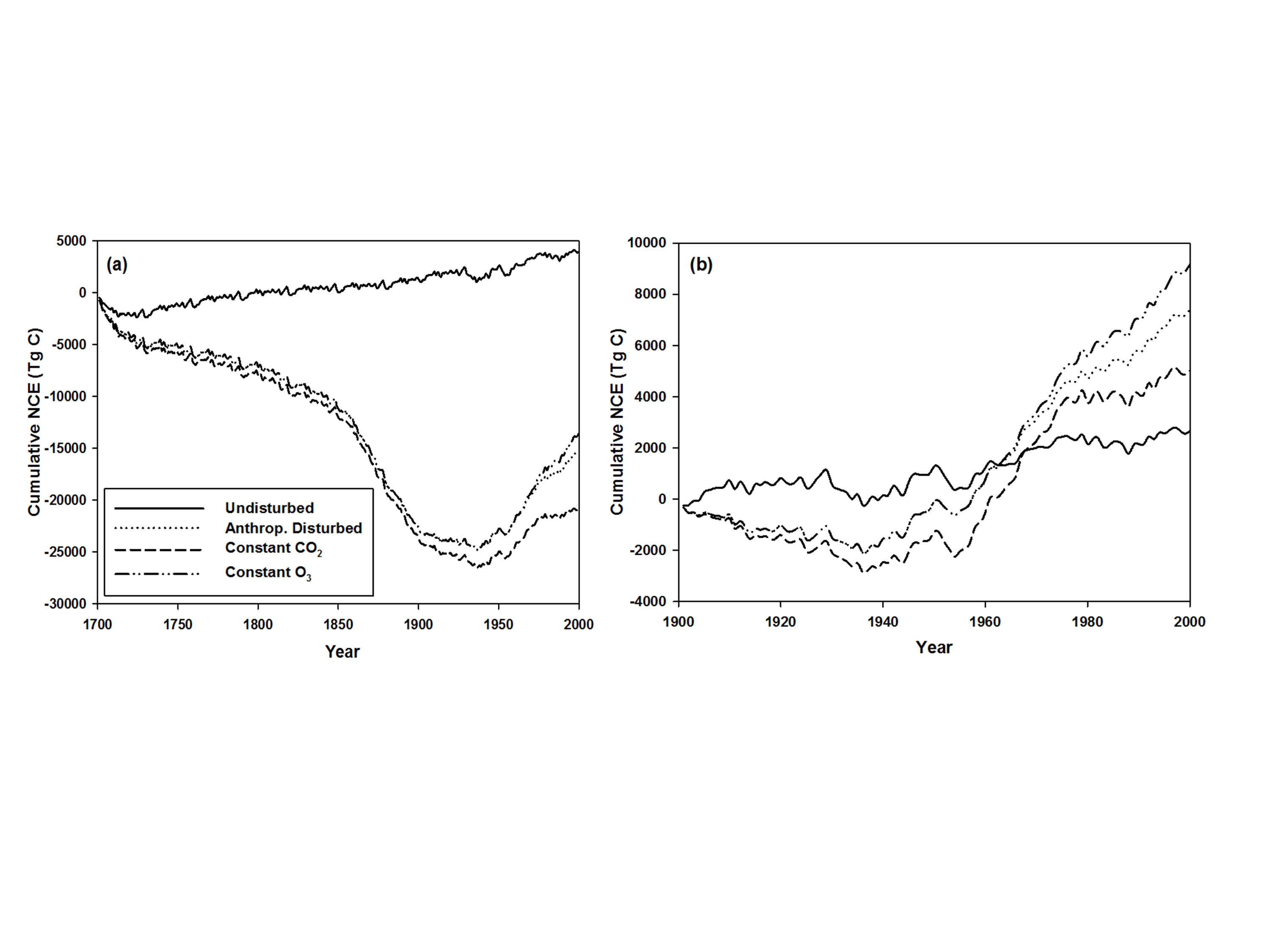I worked with my former graduate student Shree Dangal to study the effects of agricultural conversion and abandonment and timber harvest on forests of the eastern U.S. (Dangal et al., 2013). Most current land surface models assume mature forests, which are close to carbon neutral, but in reality, most U.S. forests are actively regrowing from previous disturbance. Using the Hurtt dataset of land use transitions from 1700, we have shown that forests are still recovering carbon lost from that time period, even though carbon accounting since 1900 shows that past disturbance has resulted in a large carbon sink due to forest regrowth. I am currently working with an undergraduate student (Peter Phelps) to track the effect of tropical storms and hurricanes and fires in the eastern U.S. We are testing both stochastic disturbance based on return intervals as well as applying small annual disturbances. I have also been interested in the effects of cropland irrigation on precipitation, as it has been shown to have a significant effect on monsoonal rains in East Asia (Lee et al., 2011).
Research Details

Cumulative modeled Net Carbon Exchange (NCE) for the Eastern US during the historical period (a) and 20th century (b). The anthropogenic-disturbed and undisturbed simulations represent simulation with and without anthropogenic disturbance, respectively; but with transient climate, CO2, and ozone. Constant CO2 is a simulation with human disturbance, transient climate, and transient ozone holding CO2 constant at 280 ppmv, while constant O3 is a simulation with anthropogenic disturbance, transient climate, and transient CO2 with constant ozone.
Effect of Storms and Fire on Carbon
Felzer, B. S., Phelps, P. 2013. Carbon dynamics of natural disturbance (storms and fire) in the eastern U.S.temperate forests. Fall 2013 AGU. Poster presentation.
